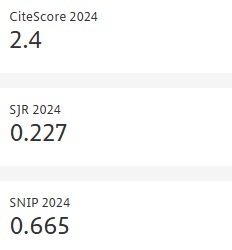The Physical Properties of the Perovskite Compound Strontium Ziconate were Calculated based on Density Functional Theory (DFT) Methods
- Published: 16-10-2025
Share
In this study, the structural, electronic, optical, Mulliken charge distribution, and bond length characteristics of cubic perovskite SrZrO3 are systematically investigated using Density Functional Theory (DFT) with Local Density Approximation (LDA), Generalized Gradient Approximation (GGA), and meta-GGA (M-GGA) exchange–correlation functionals. The computed results are critically compared with available experimental data. Structural optimization yields lattice parameters of 4.117 Å (LDA), 4.186 Å (GGA), and 4.130 Å (M-GGA), relative to the experimental value of 4.084 Å. These results indicate that LDA slightly underestimates the lattice constant, while GGA overestimates it; M-GGA provides the closest agreement due to its improved treatment of exchange–correlation interactions. Electronic structure calculations reveal functional-dependent trends in band gaps. The LDA (3.108 eV) and GGA (3.130 eV) approximations significantly underestimate the experimental band gap, whereas M-GGA (3.963 eV) provides values in much closer agreement. SrZrO3 is thus confirmed as a wide-band-gap semiconductor, with an energy gap ranging from ~3.2 eV to ~4.0 eV. Analysis of the total density of states (TDOS) reveals strong Zr–O orbital hybridization: the O 2p orbitals contribute predominantly to the valence band, while the Zr 4d orbitals dominate the conduction band. The optical response, including the dielectric function and absorption coefficient, further reflects the influence of functional choice. LDA and GGA predict red-shifted absorption edges due to band gap underestimation, whereas M-GGA more accurately reproduces the experimental optical onset at approximately 3.2 eV. Despite quantitative differences, all functionals capture the dominant optical features of SrZrO3. Finally, Mulliken population analysis, bond length evaluation, and charge distribution calculations are performed within the same approximations, offering complementary insights into the bonding characteristics and electronic environment of SrZrO3.
- View 273
- Downloads 35
- Saveds 0
- Citations (Crossref) 0


